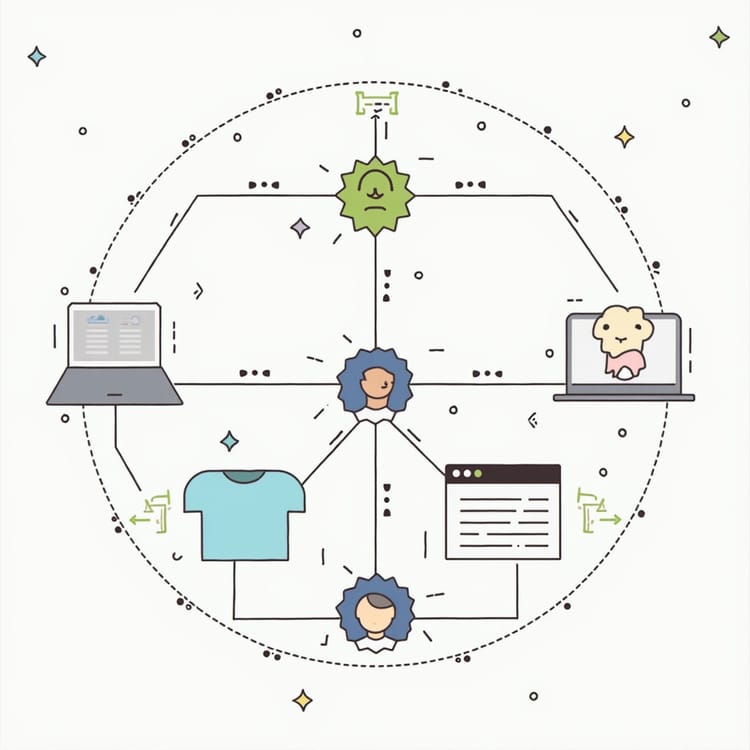Understanding Laboratory Information Management Systems (LIMS) and Related Applications

In the world of laboratory operations, managing data, samples, and workflows efficiently is critical. Laboratory Information Management Systems (LIMS) are designed to do just that, providing a comprehensive solution for tracking samples, managing data, and optimizing laboratory processes. However, LIMS applications are distinct from other systems like Electronic Laboratory Notebooks (ELNs), Scientific Data Management Systems (SDBMS), Enterprise Resource Planning (ERP) systems, and Laboratory Information Systems (LIS). In this post, we’ll delve into the key differences between these systems and provide an overview of LIMS' role in laboratory environments.
Key Differences Between LIMS and Other Systems
1. Purpose: LIMS applications are specifically designed to manage laboratory workflows, data, and samples. Their primary function is to streamline lab processes, such as sample tracking, data management, instrument integration, and workflow management. On the other hand:
- ELNs focus on electronic record keeping, helping scientists document their experiments and observations.
- SDBMS are geared toward scientific data storage and retrieval, helping researchers store large volumes of experimental data.
- ERP systems handle business operations like inventory, accounting, and supply chain management.
- LIS applications are more specialized in managing clinical laboratory information, such as patient test results and medical histories.
2. Functionality: LIMS applications typically offer a broad range of functions, including:
- Sample tracking
- Data management
- Instrument integration
- Workflow management
- Report generation
In contrast, ELNs are centered around documentation and data capture, while SDBMS focus on efficient data storage and retrieval. ERP systems are designed to manage core business functions, while LIS applications manage clinical data, including medical records and test results.
3. Integration: LIMS applications are built with integration in mind, enabling them to work seamlessly with various laboratory systems such as instrumentation, sample storage, and analytical software. While ELNs and SDBMS also integrate with other tools, they are more focused on their respective niches (documentation and data storage). ERP and LIS systems may integrate with other business or clinical tools, but their focus lies elsewhere.
4. Regulatory Compliance: LIMS applications often need to comply with stringent regulatory requirements, such as those set by the FDA, particularly in laboratories that handle sensitive data. ELNs may also meet regulatory standards but focus more on documentation. SDBMS need to comply with data storage and retrieval regulations, and while ERP systems are subject to financial regulations, they do not focus on laboratory-specific compliance. LIS applications, however, must adhere to clinical regulations like HIPAA.
CLIA CAP Compliance and IT Requirements for LIMS
When it comes to compliance with the Clinical Laboratory Improvement Amendments (CLIA) and College of American Pathologists (CAP) standards, LIMS applications must ensure certain IT requirements are met, including:
- Backup and Recovery Systems: Ensuring that laboratory data and records are securely backed up and recoverable.
- Time Stamps: Accurately tracking the time of all laboratory data entries.
- Access Controls: Implementing strong security measures to safeguard sensitive information.
For CLIA CAP compliance, certain access control features are vital, including:
- User Authentication: Verifying the identity of users via usernames, passwords, or more advanced forms of authentication.
- Role-Based Access Control: Restricting access based on users' roles and responsibilities within the laboratory.
- Audit Trails: Logging and monitoring access to laboratory data to detect unauthorized access or changes.
- Physical Security: Restricting physical access to sensitive data and equipment.
- Encryption: Protecting sensitive data like patient test results through encryption during both transmission and storage.
These measures help ensure the integrity and security of data within the laboratory.
The LIMS Data Model
A robust data model is essential for managing the different elements involved in laboratory operations. Below is a simplified structure of the LIMS data model:
- Sample
- Results
- Tests and Analyses
- Results
- Equipment
- QC
- Storage
- Labels
- Certificates of Analysis
- Workflows
- Steps
- Tests and Analyses
- Results
- Equipment
- QC
- Test
- Results
- Equipment
- QC
- Samples
- Reagents
- Equipment
- Tests and Analyses
- Calibration
- User
- Samples
- Workflow
- Samples
- Steps
- QC (Quality Control)
- SOP (Standard Operating Procedure)
- Certificate of Analysis
- Inventory
- Project
- Order
This model helps laboratories maintain organized records for samples, tests, equipment, users, and workflows. It ensures that all data is captured, stored, and retrieved accurately, making it easier to manage laboratory processes efficiently.
Conclusion
LIMS applications play a pivotal role in managing laboratory workflows, data, and samples. They differ from other systems like ELNs, SDBMS, ERP, and LIS due to their specific focus on laboratory operations and their ability to comply with regulatory standards. By integrating with various tools and ensuring compliance, LIMS applications streamline laboratory processes, enhance data integrity, and improve overall efficiency. The data model behind LIMS is crucial for managing complex laboratory data, ensuring that every step in the workflow is properly tracked and recorded.




